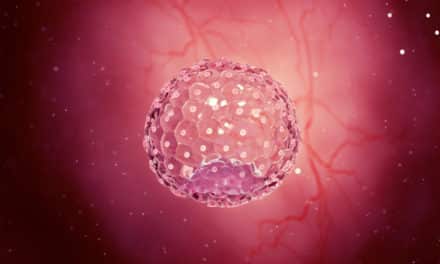If you are young and do not have a male partner, but want to be a mother, you may wonder if intrauterine insemination is worth trying. The answer is yes, but only if you meet the appropriate conditions.
Most women choose it for various reasons: it is the closest thing to natural fertilization, it is faster, cheaper, and less invasive than in vitro Fertilization (IVF), and it allows several attempts to be made in a short period of time.
However, it is important to know that the chances of achieving a pregnancy with this technique are lower than with IVF, especially if you are already 36 or more. There is no age limit for this technique, but it is advisable to be under 37 years old because a woman’s fertility decreases as she gets older. That is why it is a technique that is not recommended for elderly women.
However, for many young women, without a partner or with a female partner, artificial insemination is a very good option, since the chances of achieving a pregnancy are similar to those of any other woman who tries it naturally. Therefore, if the first attempt fails, do not be discouraged, since it falls within what is considered normal. In fact, many centres offer treatment packs with more than one attempt, since in many cases, two or three are enough to achieve pregnancy.
In this article, Dr Dalia Rodríguez, from our Reproduction Service, explains how it is done.
To find out if this technique may be right for you, the first thing you should do is ask for a visit with a reproduction specialist. During this first visit, the doctor will ask you different questions: personal and family medical history, such as diseases, surgeries, lifestyle, diet, toxic habits as well as menstrual regularity, if you have pain with your period, if you have had some sexually transmitted disease… It is also common to perform a mammary and gynaecological examination, which includes cytology, as well as request a complete analysis, to rule out infections and check your health status.
Another necessary test is a study of your ovarian reserve. It consists of performing a blood test to observe the values of the Antimullerian hormone (AMH) and a transvaginal ultrasound, where we will count the number of antral follicles. These are small pockets of fluid that form and grow in the ovaries and inside which are immature oocytes. Each follicle contains one oocyte. Ultrasound visualizes the number, size, and growth rate of the maturing follicles. The size of the follicles grows throughout the cycle until they break at the time of ovulation and release the oocyte. In the ultrasound, the uterine morphology is also evaluated, and it is verified that there are no other problems that could hinder a pregnancy.
Regarding the sperm donor and his selection, you should know that the semen banks carry out a very rigorous study of the donors, to avoid the transmission of diseases to the offspring, including a genetic study, qCarrier, to rule out that they are carriers of some genetic disease. The selection of the donor is made according to your blood group to avoid problems of incompatibility due to Rh, and your traits, as stipulated by the Spanish reproduction law.
If all the analyses and tests carried out are correct, the ultrasound controls to assess the growth of the follicle will begin after about 8 to 10 days from the beginning of the menstrual cycle. From 16 mm, more frequent controls and urine tests will be done, in order to program the day of insemination.
In cases where hormonal treatment is necessary (especially in women over 37 years of age or with very irregular cycles), the treatment is usually very gentle and begins on the 3rd day of the period. The controls in this case begin after 5 days of treatment and will be carried out every 2 days, until the selected follicle reaches a diameter of at least 18 millimetres. At that time, another hormone (HCG) is administered, which causes ovulation and insemination takes place within 2 days.
From the time your period comes, until you are ready to perform the insemination, 8 to 15 days may elapse, depending on how your cycles are and if you do the treatment, how you react to it.
It is a very quick and painless process, which is performed directly in the practice and is similar to a gynaecological examination. A speculum is placed, and with a catheter, the semen sample is inserted into the uterus. You will only have to remain at rest for 10 to 15 minutes after insemination, and then you can lead a normal life. If you have had a hormonal treatment, you will need to put progesterone pessaries, vaginally, from the next day for 10 days, to favour the whole process.
During the first 3-4 days after insemination, it is advisable that you do not make significant physical efforts and that you take care of your diet avoiding eating undercooked meats and unpasteurized cheeses with a creamy texture. Sometimes, after insemination, it is possible to have some small blood loss, which is usually scarce and does not have to alarm you. However, inform your doctor and always ask any questions you have.
Intrauterine insemination using donor sperm can also be indicated in young heterosexual couples, when the semen does not meet the appropriate qualities.
If your partner’s sperm is used, he will have to perform the tests indicated by the specialist. The sperm sample must be obtained the same day as insemination. To maximize semen quality, it is advisable not to have sexual intercourse for 2-4 days prior to the day the sample is collected.
We hope that reading this post has helped you, and, if you are already convinced, it encourages you to make your decision. If you need more information, check our website. Good luck!














